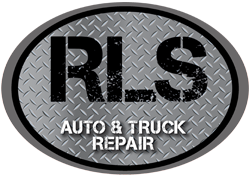When it comes to staying safe and confident on the road, timing is everything. One of the most effective ways to prepare for the changing seasons is with a seasonal tire swap. This simple but crucial service ensures your vehicle has the right support to handle shifting weather, road conditions, and temperature changes. It’s not just about convenience, it’s about safety, performance, and peace of mind.
Why Seasonal Tire Swaps Matter
Every season brings new challenges. Warmer months often mean longer drives on dry, heated pavement, while colder months can bring icy, wet, or slushy conditions that affect traction. Tires are designed with different compounds and tread patterns, and those details make all the difference in how your vehicle grips the road. By scheduling a seasonal tire swap at RLS Auto & Truck Repair in Franklintown, you’re giving your vehicle the ability to adapt to the environment and keep you in control.
Signs It’s Time for a Tire Swap
Not sure if it’s time to schedule your swap? Keep an eye out for these indicators:
- Temperatures consistently dropping or rising to seasonal extremes
- Decreased traction when roads are wet, snowy, or icy
- Noticeable tread wear that makes your tires less effective
- An upcoming road trip across different climates or conditions
If one or more of these apply, it’s a good idea to consider preparing for a swap before the weather fully changes.
Benefits of Seasonal Tire Swapping
Think of a seasonal tire swap as preventative care. Here’s why it matters:
- Improved Safety: Proper tires give you better traction and control.
- Optimized Performance: The right tires help your vehicle handle smoothly and respond effectively in varied conditions.
- Extended Tire Life: Rotating between seasonal sets reduces overall wear, helping them last longer.
- Peace of Mind: No matter the season, you’ll feel confident knowing your vehicle is ready.
Timing Is Key
Many drivers wait until the weather has already shifted, but the best time to plan a tire swap is before extreme seasonal changes fully set in. By being proactive, you’re avoiding last-minute stress and making sure your vehicle is always prepared for the road ahead.
Schedule Your Seasonal Tire Swap
At RLS Auto & Truck Repair, seasonal tire swaps are about more than just changing rubber, they’re about ensuring your vehicle is ready for the season ahead. From improved handling to better safety in unpredictable weather, this service is one of the smartest steps you can take for year-round reliability.
Don’t wait for the first snowfall or heatwave to remind you, schedule your seasonal tire swap today at RLS Auto & Truck Repair and drive with confidence in every condition!

